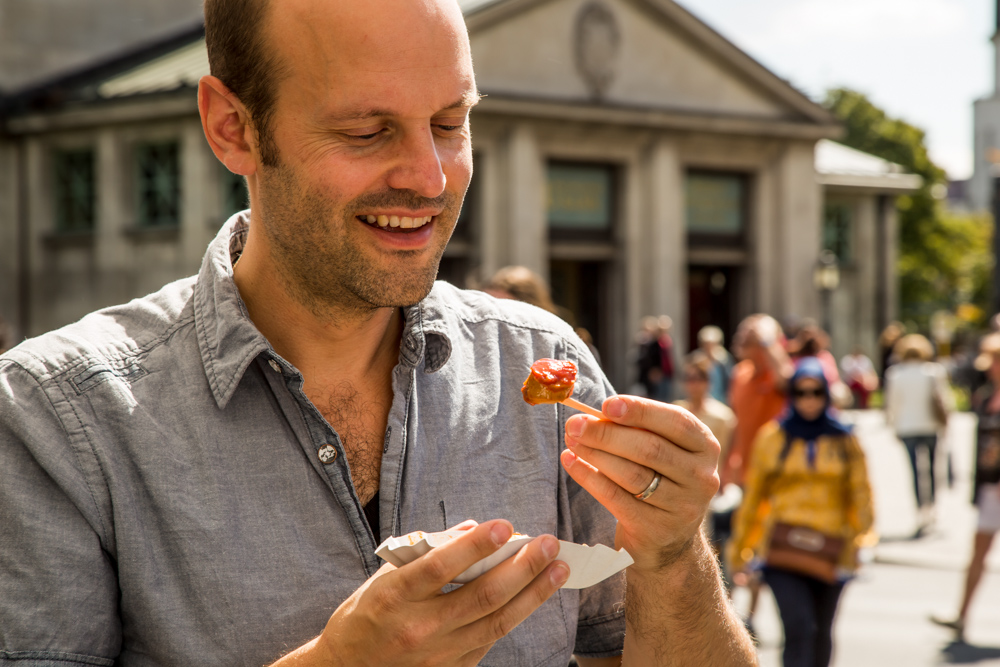
TRY Berlin’s Food Scene
by Jörn Gutowski
An insight into Berlin’s culinary landscape by Jörn Gutowski, the founder of TRY FOODS. You visit Berlin for the museums, the historical sights, the culture and the club scene, but for the food? In fact, not that long ago, not a single visitor would have claimed to be traveling to the German capital for its culinary attractions.
In 2003, when I moved here from Boston, I was stunned by the lack of variety and care that Berlin’s food scene had to offer. Of course, even back then, there were a few culinary islands. But for the general part, it was more about calorie intake than indulgence. Eating out was the necessary pit stop, before a night out: cheap pizza followed by some heavy spending on drinks at the club. Innovation was exclusive to the art and nightlife scene, but not gastronomy.
Nowadays, many go out with the sole purpose of eating in Berlin. For a while, there has been a growing number of restaurants, markets, shops and projects, devoted to great food and interesting new eating concepts. Equally, there is an increasing amount of people, who enjoy eating better, more abundantly and more socially. To ask, which came first – the people or the places – would be to ask the chicken and egg question.
However, if you ask me, all the young, creative immigrants coming to Berlin in the last few years, definitely played a major part in this development. While most of them certainly did not arrive here with the goal of working in gastronomy, lots of them somehow ended up doing so anyway. Some of Berlin’s major trends are owed to these young foreigners, like the third-wave-coffee movement, the street food scene and the private supper clubs.
Cook at Doyum in Berlin Kreuzberg (photo by Ole Schwarz)
Interestingly, the fact that Berlin’s palate is influenced by outsiders, is far from being modern. Like no other German city, Berlin has had a long tradition of being shaped by different streams of immigration over time. Many cultures have left their culinary mark on the city. In the 17th century, Huguenots, fleeing from persecution in France, settled down in Berlin and brought along their dishes. It is thanks to them, that Berliners call their meat balls “Buletten” (from the French word “boule“) today and that “Hühnerfrikassee” became a standard in the German capital.
In between the first wave of immigration and the most recent one, it was primarily the immigrants from Silesia and East Prussia in the second half of the 19th century, who played another important part, bringing along their own recipes like “Königsberger Klopse”. At the time, Berlin was literally swamped by industrialization and became the fastest growing city in the world. This overwhelming growth, combined with the inventions of the industrialization era, initiated many ever-lasting changes in Berlin’s food culture. This way, the “Eckkneipe”, a common meeting space providing an alternative to crowded workers’ tenements, was born, and so was the “Markthalle” as the central indoor market location.
Street Food Thursday at Markthalle IX (photo by Ole Schwarz)
These same Markthallen are experiencing a real renaissance now. The Marheinekehalle in Kreuzberg, the Arminiushalle in Moabit and especially the Markthalle IX, also in Kreuzberg, have recently become hot spots again. Not so much for your daily grocery shopping, but rather like a special meeting place, to take in the atmosphere, meet like-minded people and enjoy some exceptional food on the spot. Food is celebrated as an event in these halls. However, it is not merely about indulgence, but, particularly at the Markthalle IX, the origin of the produce and the people behind the products are at the center of attention.
Many Berliner’s are favoring a more regional production of food and are starting to see food as an experience. Faceless, industrial products have become outdated. We want to see how the dishes on our plates have been created, and where the pig came from that ended up as the Bratwurst in our mouths. The Markthalle, with its nostalgic charm and historical feel, creates the perfect stage for that. It’s what makes events like „Wurst und Bier“ or the international „Streetfood Thursday“ such a success.
Berlin is the place in Germany, where food trends happen first, with event food just being one example. Another big development is the movement towards vegetarian and vegan cuisine. No other German city is home to this many vegan restaurants, and thus it wasn’t much of a surprise, that the first German vegan supermarket was founded here.
Likewise, many ideas to do with urban farming are coming from Berlin: projects like Prinzessinengärten or Infarm are looking for alternative routes to food production in urban settings.
Minimal transportation is growing to be an important issue with Berlin restaurants. Many restaurant owners start asking questions like “Which products are actually local?” and “How can we create a link between our cuisine and the city/region, that we live in?”
With a return to localism and artisan goods, we also seem to return to old recipes and labeling. While some 20 years ago, it would have been unimaginable that young restaurant owners oscillate towards old-fashioned style, now we can see more and more simple foods going “deluxe”. For instance, you can go to a place called Mutti, try homemade aspics at Kantine Kohlmann or sandwiches at Die Stulle – It’s a very relaxed way to handle tradition. Sometimes, there is also interesting combinations of influences, creating something extraordinary like Sauerkraut with coriander by Weinstein. I love these kinds of restaurants and can also recommend Herz & Niere and Lokal as two, who master the art of combining old and new perfectly.
Even high-end restaurants have been inspired to move into that direction and to create a stronger focus on their surroundings. La Soupe Populaire, a recent project by two-star chef Tim Raue, the one-star restaurant Facil and the Weinbar Rutz are just a few top restaurants that offer down-to-earth German cuisine at such a high level of skill. If you really want to try the typical Berlin dish “Eisbein”, I suggest you do so at Weinbar Rutz (downstairs), the self-proclaimed „salvation of food culture“.
Speaking of typical Berlin foods: you cannot draw up a list, without mentioning the obligatory Döner Kebap and Currywurst. Did you know, that both are the result of international immigrants moving to Berlin? Well, in case of the Currywurst, it is actually owed to the allied soldiers stationed in Berlin after the Second World War, who brought Ketchup and Worcestershire Sauce from England and the US. The sauces were merged into the typical curry sauce, to spice up those sausages that lacked the quality to be eaten plain.
Kebaps have a very long tradition in Turkey. Their origin lies within the southeastern Turkish cuisine and the Arabic tradition. “Kebap” is arabic for grilled or braised meat. The Döner Kebap is a special type of Kebap, that has been invented in the 1970s in Berlin. Like, with many famous inventions, there are numerous legends told about its origin. However, there is one thing, that is safe to say: the Döner Kebap takes a typical Turkish dish (meat grilled on a stick with vegetables and salad) and adapts it to the modern needs of buzzing big city life, by serving it as a street food in bread.
Turkish Meze at Meyan in Schöneberg (photo by Ole Schwarz)
Luckily, street food nowadays has more to offer than just Döner and Currywurst, whose vendors tried to consistently undercut each other over the last years. What is the margin in a Döner that only costs 1,50 € and do you really want to know what’s in it at that price? I don’t.
For a few years now, the street food scene has been changing for the better. Some businesses no longer submit to following the reign of cheaper and faster, but try to raise the standards to a higher quality and greater variety of snack foods sold. One of the first to jump the wagon was W-Imbiss, offering delicious food with Indian, Arabic and South American influences. Today, you can find street foods from all over the world in Berlin: Japanese, Mexican or Sudanese. Personally, I am a big fan of Asian soups, especially Ramen at Cocolo, Vietnamese Pho at Pho Co or Chinese noodle soup at Selig.
All this variety merging with the creativity of the city is very particular to Berlin’s food scene. If I should describe a typical Berlin style, it would not be a single dish, but rather a way of taking something and transforming it into something else that fits the here and now – to say it in the words of Berlins blogger and photographer Claudia Hirschberger: “Berlin is like a huge stomach, consuming everything and forming new things.”
About TRY FOODS:
TRY FOODS combines the pleasure of trying new foods with interesting information to accompany it. Apart from product focused sets like TRY Olive Oil or TRY Coffee, the startup also offers a TRY Berlin set, containing five Berlin specialties and an over a 100-page-long booklet about the Berlin food scene.
You can find more info about TRY FOODS as well as their web shop here: www.tryfoods.de
Exclusive discount code for Go—PopUp readers:
10 % off your first purchase, when entering the code try_gopopup at check-out online at www.tryfoods.de
(valid until July 31, 2015; can’t be combined with our discounts)
photo credits: Ole Schwarz
Where to find us
gopopup.com
facebook.com/gopopup
@gopopupcom
#gopopup







